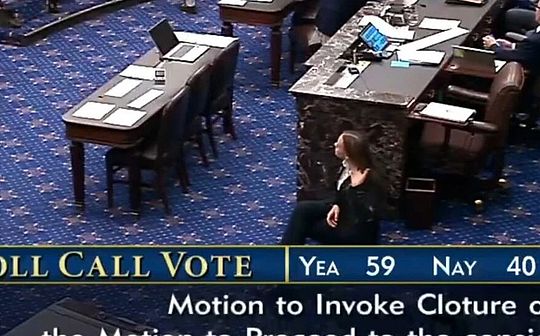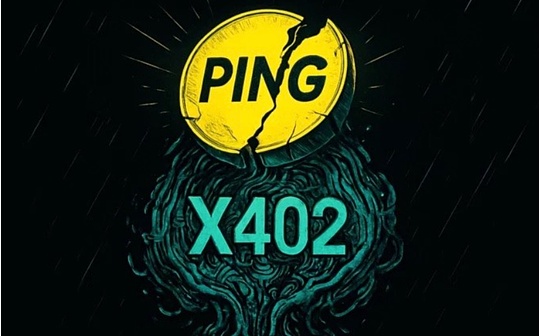
On November 8, the U.S. federal government shutdown entered its 39th day, becoming one of the longest government shutdowns in history.The shutdown was caused by Congress’s failure to pass a spending bill for fiscal year 2026, which forced key federal agencies, including the Bureau of Labor Statistics (BLS), to suspend some operations.The October official employment report, originally scheduled to be released on November 7, was postponed. This not only interrupted the chain of key economic data, but also heightened market concerns about the health of the labor market.
In the absence of official data, private sector reports have become the main tool for taking the pulse of the U.S. economy.However, what these private reports reveal is a rather contradictory picture: on the one hand, the labor market is showing signs of weakness, with layoffs surging; on the other hand, private employment data unexpectedly rebounded.The mixed signals did not significantly change market expectations for the Fed’s December meeting.According to the Chicago Mercantile Exchange (CME) FedWatch tool, as of November 6, the probability of the Federal Reserve cutting interest rates by 25 basis points at the December 10 meeting was about 58.3%, down slightly from 63.8% a week ago, reflecting investor uncertainty about the policy path.
At this time, the Federal Reserve’s dual mission of achieving maximum employment and price stability is facing a severe test.The current target range for the federal funds rate is 3.75% to 4.00%. The Federal Reserve has cut interest rates by 25 basis points twice in September and October in response to the slowdown in the labor market.However, the inflation rate is still hovering around 3.0%, well above the long-term target of 2%, and is subject to upward risks due to the impact of tariff policies and supply disruptions.Federal Reserve Chairman Powell emphasized at a press conference on October 29 that policymaking will be “data dependent” and compared the economic situation to “driving in fog”: the lack of data caused by the government shutdown may prompt the Federal Reserve to adopt a more cautious stance.He pointed out that labor market risks are biased to the downside, while inflation risks are biased to the upside. This tension requires the Federal Reserve to seek a balance between its dual missions.
The Economic Impact of the Government Shutdown: Data Vacuum and Uncertainty
The U.S. government shutdown started on October 1 and has lasted for more than a month, with a wide range of impacts.According to estimates by the Congressional Budget Office (CBO), such shutdowns could result in an annual loss of 0.1% to 0.5% of GDP and amplify economic uncertainty.The shutdown stems from differences between the two parties on border security and immigration reform. Democrats accused Republicans of using the shutdown as a political bargaining chip, while the White House emphasized that Democrats refused to compromise.The shutdown has forced about 800,000 federal employees to be furloughed or work without pay, with civilian Defense Department employees and Department of Homeland Security personnel bearing the brunt.At the same time, social welfare programs such as the Supplemental Nutrition Assistance Program (SNAP) and the Women, Infants, and Children Nutrition Program (WIC) are facing funding shortages, and some beneficiaries may only receive half of the benefits in November.
For the labor market, a direct consequence of the shutdown is a disruption in official data.The BLS’s employment situation (Employment Situation) report, consumer price index (CPI) and producer price index (PPI) and other core indicators were all hindered.Although October CPI data was reluctantly released before the shutdown, showing an annualized inflation rate of 3.0%, a slight increase from August’s 2.9%, mainly driven by a 4.1% increase in gasoline prices, core CPI (excluding food and energy) remained stable at 3.0%.However, data collection has been interrupted for more than two-thirds of November, meaning the next inflation report may be delayed or incomplete.Fed officials acknowledged that this “data black hole” makes policy more difficult.Chicago Fed President Austin Goolsby said on November 3 that the shutdown was “moving forward in a fog” and could lead to a “slower pace” at the Fed’s December meeting.
The government shutdown is not only a symbol of fiscal failure, but also exposes the U.S. economy’s fragile dependence on reliable data.In the era of globalization, data disruptions can amplify market panic, leading to corporate hiring freezes and consumer spending contractions.In the long run, this reminds the U.S. Congress to reform the budget process to prevent political deadlock from affecting the economic foundation.But in the short term, it reinforces the importance of private data and drives the market toward alternative indicators such as ADP and Challenger reports.While this shift is practical, it also introduces bias: Private data has limited coverage and cannot capture the dynamics of government employees.
Challenger report: Layoffs surged in October, hitting 22-year high
In the absence of official data, the monthly job cuts report released by employment consulting firm Challenger, Gray & Christmas has taken center stage.The report tracks companies’ publicly announced layoff plans. October data shows that U.S. employers announced 153,074 job layoffs, a 183% increase from September’s 54,064 positions and a 175% increase from October 2024.This is the highest monthly level since October 2003 (171,874), and the cumulative annual layoffs have reached 1,099,500, an increase of 65% from the same period in 2024, and has exceeded the total in 2024 by 44%.
There are multiple reasons for the surge in layoffs: cost cutting ranks first (with the highest proportion in October), followed by artificial intelligence (AI) adoption, market economic conditions and restructuring.The report specifically pointed out that “DOGE impact” (referring to federal layoffs and contractor reductions driven by DOGE, the government efficiency department) is the primary driver for 2025, but AI jumped to second place in October, resulting in a total of 48,414 job losses.The warehousing industry led the decline, with 47,878 layoffs in October, bringing the annual total to 90,418, a year-on-year surge of 378%; the technology industry jumped from 5,639 in September to 33,281, a significant annual increase; the service industry 63,580 (annual increase 62%); the retail industry annual total 88,664 (annual increase 145%); consumer goods companies 41,330 (annual increase 21%).It is worth noting that the number of companies announcing layoffs in October reached 450, an increase from less than 400 in September, indicating sluggish business confidence.
In addition, the report showed that layoffs were traditionally low in the fourth quarter (due to the Thanksgiving and Christmas seasons), but were unusually high in October, suggesting that economic pressures are beyond seasonal.Challenger chief revenue officer Andy Challenger commented: “Similar to 2003, disruptive technologies are reshaping the landscape, and the post-pandemic hiring boom correction is compounded by AI and cost pressures.”
It should be noted that although Challenger data fluctuates greatly (it only tracks public announcements), its trend signals cannot be ignored.AI-driven layoffs reflect structural changes: Technology giants such as Amazon and Microsoft have laid off tens of thousands of employees in an effort to optimize efficiency, but this has exacerbated the risk of skills mismatch and made it more difficult for low-skilled workers to re-employ.The surge in warehousing and retail sales points to weak consumption. Affected by high interest rates and tariffs, inventory accumulation is forcing companies to slim down.Overall, the report paints a “not pretty picture”: the labor market has shifted from a net gain of 100,000+ per month in the early years to one dominated by layoffs, signaling a potential recession.If the shutdown is extended, layoffs at federal contractors could further magnify the effect and test the Fed’s maximum employment mission.
ADP report: Private employment unexpectedly rebounds, but needs to be interpreted with caution
In contrast to Challenger’s pessimism, the ADP National Employment Report showed a net gain of 42,000 private sector jobs in October, reversing losses of -29,000 in September and -32,000 in August (revised).The number exceeded analysts’ expectations of 32,000 and marked the first positive growth since July.Nella Richardson, chief economist at ADP, noted: “Employers added jobs in October for the first time since July, but hiring was more modest than earlier this year. Wage growth has been flat for more than a year, indicating a balance between supply and demand.”
The industry breakdown shows that trade, transportation and public utilities increased by 47,000 jobs, and education and health care increased by 26,000 jobs, offsetting losses of -17,000 jobs in the information industry and -15,000 jobs in professional/business services.Large enterprises (500+ employees) contributed 73,000 increments, while small and medium-sized enterprises were a net negative.The annual median salary increased by 4.5%, and 6.7% of those who changed jobs.ADP covers 26 million private employees, and the data is based on anonymous payrolls, which is more timely than the official one.
However, ADP often deviates from BLS data and is susceptible to seasonal adjustments.ADP had forecast a net loss in September, but the actual rebound showed hiring resilience.The gains in transportation and trade are due in part to stockpiling ahead of the holidays, but disruptions to federal spending due to the shutdown could be felt in November.
It should be noted that ADP’s positive signal provides respite but cannot mask overall weakness.In early 2025, the monthly net increase exceeded 100,000, but now it has dropped to tens of thousands. Combined with the wave of layoffs in Challenger, it shows the “two-speed differentiation” of the labor market: the blue-collar service industry is barely supporting, and the white-collar technology and service industries are under pressure.The rebound in ADP may be a temporary phenomenon, and if consumption cools down further (dragged down by 3% inflation and a high savings rate), the November data may be reversed.This reinforces the need for Powell’s “data dependence”: a single report is not enough to set the tone and needs to be verified by multiple sources.
The Fed’s Dual Mission: The Employment-Inflation Trade-Off Dilemma
The Federal Reserve’s dual mission stems from the 1977 Amendment to the Federal Reserve Act, which requires promoting “maximum employment, price stability, and moderate long-term interest rates.”The 2% inflation target was established in 2012, and there is no fixed threshold for maximum employment, which is affected by non-monetary factors (such as demographics and technological changes).The 2025 Framework Review highlights that in non-linear environments (such as supply constraints), employment shortage strategies can trigger inflation surges.
Currently, the unemployment rate is stable at around 4.1% (September data), but the black unemployment rate has increased, showing unevenness.Inflation is at an annualized rate of 3.0%, with core PCE at 2.8%, driven by tariffs (expected to push up 0.8% in early 2026) and energy volatility.The September Summary of Economic Projections (SEP) shows that the median FOMC member expects interest rates to be 3.9% by the end of 2025, but the scatter plot is highly divergent: some forecasts have only one reduction, and others have three reductions.
Although the summary of economic forecasts marked a rate cut in December, the government shutdown changed the situation and private data sent mixed signals without clear direction.Differences of opinion within the Fed are highlighted.Federal Reserve Board Governor Lisa Cook said on November 3 that labor market risks “outweigh the potential for inflation acceleration,” calling for prioritizing employment and supporting further interest rate cuts to prevent a sharp deterioration.She also said that past experience shows that the labor market can deteriorate quickly.Goolsby, on the other hand, viewed inflation as a major warning sign, warning that market expectations could become a self-fulfilling prophecy if tariff effects are embedded in them.Goolsby said in March that inflation has exceeded target for four and a half years and is heading in the wrong direction.Powell admitted at the October press conference that committee members had sharp differences on the December path. Some were worried about a decline in employment, while others were wary of rising inflation.Not a predetermined path, but one based on outlook and risk balance.
Cook’s employment priority reflects the “shortfalls approach” derived from the 2020 framework and aims at inclusive growth; Goolsby’s inflation hawks remember the lessons of the great stagflation of the 1970s.Although Powell’s “neutral” response is solid, it exposes the challenge of the Fed’s independence: Trump’s tariff policy may push up inflation by 0.07% to 0.8%, forcing the Fed to respond “pre-emptively”.
Cutting interest rates helps employment but may fuel inflation, while maintaining high interest rates suppresses inflation but hurts growth.Under the current situation, the Fed should strengthen communication and publish scenario analysis to manage expectations.In the long run, a single inflation mandate is more efficient or more efficient (like the European Central Bank), but dual mandates are more consistent with U.S. inclusion goals.Currently, the government shutdown has amplified uncertainty, and the Federal Reserve may need to gradually lower interest rates: if it decreases in December, the extent will be limited; if it remains unchanged, it will signal inflation warning.
Market expectations and potential scenarios: A look ahead to the December meeting
The CMEFedWatch tool is based on federal funds futures pricing. On November 6, it showed that the probability of the December target interest rate being 3.50%~3.75% was 58.3%, and the probability of being unchanged (3.75%~4.00%) was 41.7%. It was 63.8% a week ago. Challenger/ADP mixed signals led to a slight correction.After Powell’s press conference, the 10-year Treasury yield rose to 4.05%, the U.S. dollar index reached 99.10, and the stock market turned negative, reflecting concerns about “no guaranteed interest rate cut.”
Although market expectations tend to be rational, it is easy to underestimate the risk of a prolonged government shutdown.If the economy is closed until Thanksgiving, the interruption of the social welfare program (SNAP) may lead to a sharp drop in consumption, amplifying the employment decline.The Fed should learn from the experience of the 2013 shutdown and use high-frequency data, such as credit card spending, to fill in the gaps.From an investor’s perspective, the December rate cut is still the benchmark, but the volatility is high.Generally speaking, the labor market will shift from prosperity to correction in 2025, and the Federal Reserve policy needs to be “cautious in the fog” to balance the dual missions to avoid a hard landing.
The U.S. labor market is showing cracks under the shadow of the government shutdown: The layoff storm revealed by Challenger is intertwined with the hiring highlights shown by ADP, highlighting the structural challenges of the Federal Reserve policy.The Fed faces a classic dilemma – a soft landing in employment and the race to eliminate inflation – while Powell’s neutral stance stabilizes the market, it cannot conceal the structural differences in policy direction.The upcoming December meeting may be a turning point: cutting interest rates can buffer employment risks, but if inflation rebounds, it will test the Fed’s credibility.
The current situation encountered by the US authorities shows the fragility of its system. In any case, political deadlock should not sacrifice the timeliness and transparency of economic data.Looking ahead, ending the government shutdown and resolving tariff uncertainty will be key.






